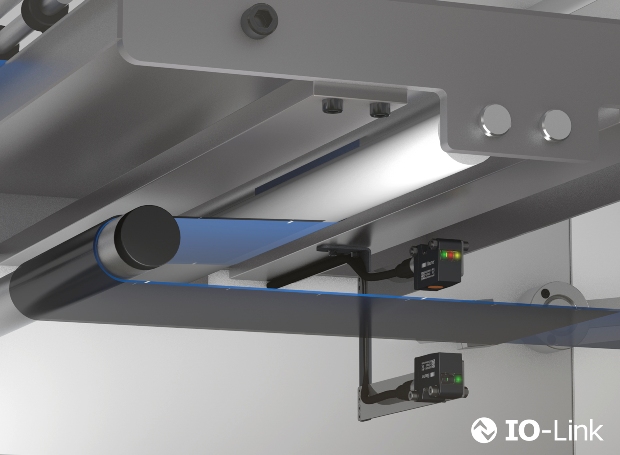Ultrasonic detection technology is being used as an approach to detecting layered sheets in manufacturing processes
Manufacturing industries that produce layered materials are faced with the task of double sheet detection during processing and inspection stages. This requires consistent and reliable detection of one or more layers of materials such as foil, paper, cardboard, labels or even thin metal sheets and this can present complex challenges.
If the detection isn’t accurate and reliable and issues are not resolved, it can lead to machine downtime, wasted materials and in some cases expensive repair costs. This can occur across a myriad of applications such as printing, packaging, automotive and finishing industries.
Ultrasonic Sensors
One of the best approaches to such a difficult task is to use ultrasonic sensors. Sensing and instrumentation specialist Baumer has long been involved in the production of ultrasonic technology and the latest additions to the company’s range of high-performance ultrasonic sensors are the U300, U500 and UR18, which represent a range of product families which offer effective and extremely flexible methods of achieving double sheet detection across a wide range of materials.
These new sensors offer important functions and adjustment options which means they can be adapted to suit many double sheet detection applications, the most important of which is a through beam sensor. In this case, the receiver of the through beam sensor is equipped with two binary switching outputs as well as an IO-Link interface and is designed to reliably detect the most common materials in the standard setting.
However, if critical material thicknesses occur, the sensor can be adjusted for these more challenging demands through parameter configuration. In either IO-Link or switching mode, the sensor reliably detects one, two or more layers of particularly difficult materials such as foil or thin metal sheets.
In addition to double sheet detection, the sensors can also be used for film tear detection, bonding surface detection and also label detection which is where more diverse materials and varied thicknesses occur as well as more varied installation conditions.
Such multi-material detection challenges are manageable with Baumer’s latest range of ultrasonic sensors because the through beam can be easily adjusted to suit the material type being detected as well as other critical factors such as distance.
Parametric Adjustment
Thanks to the IO-Link interface, the application parameters can be quickly and easily adjusted using the link to suit different types of sound-absorbing materials. This ensures reliable detection with the process values related to the material being displayed to enable the switching thresholds to be set accordingly.
The sensor is supplied with different physical characteristics to help with positioning and installing it. In this way, the transmitter housing and the corresponding receiver can be selected from a range of options depending on the installation requirements. It’s also possible to combine a cubic receiver (U500) with a cylindrical transmitter (UR18) which ensures optimum flexibility in the overall design of the detection system.
To enhance flexibility, ease-of-installation and reliability of the sensors, all the variants of the U300, U500 and UR18 are available from Baumer all configured using IO-Link parameters that can be used by the through beam sensor to suit the widest range of application requirements.

